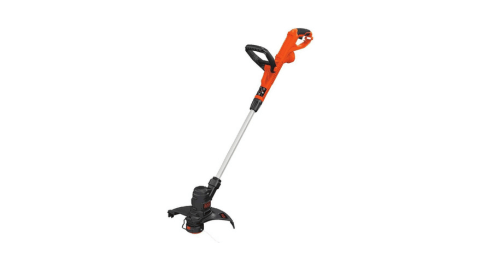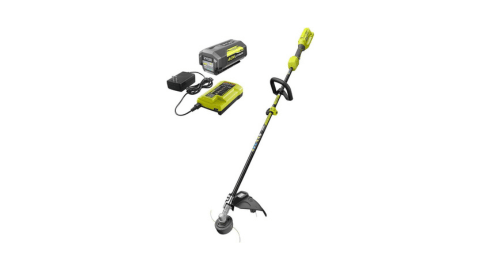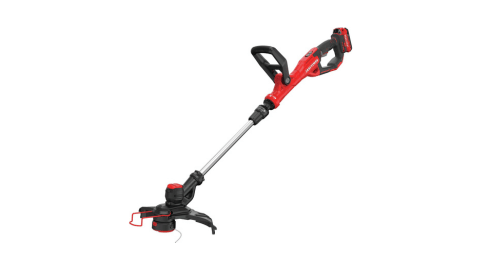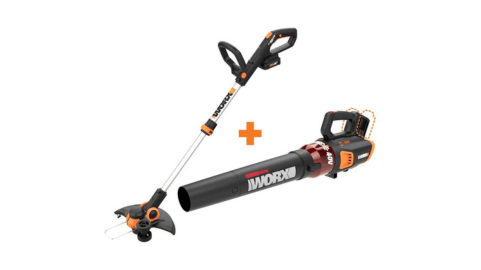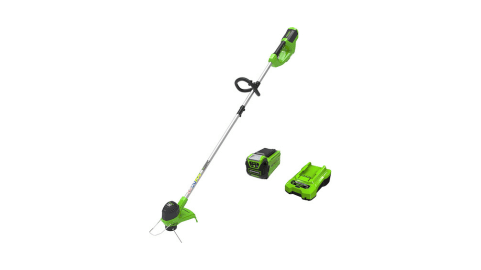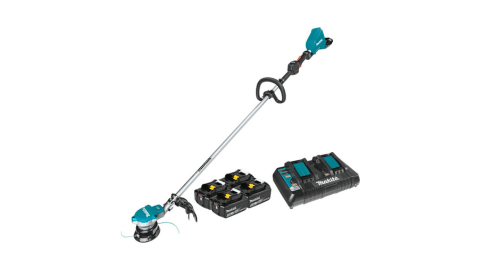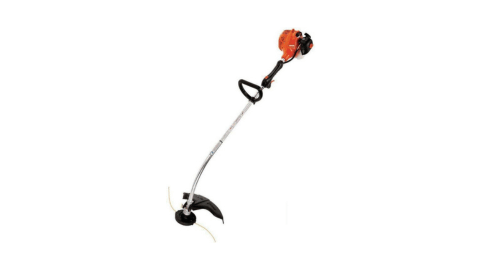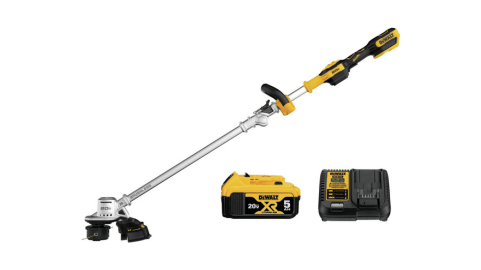A weed eater, also called a string trimmer or weed whacker, is a tool designed for cutting grass and light vegetation. Unlike lawnmowers, which cover large flat surfaces, weed eaters excel at reaching tricky areas like edges, corners, and around obstacles. They work using a rapidly spinning nylon string that cuts through grass and weeds with precision.
Weed eaters are available in various types, each catering to different needs. The primary categories are gas-powered, electric (corded), and battery-powered (cordless) models, each with its advantages and disadvantages. Whether you’re a homeowner looking to maintain a small lawn or a professional landscaper tackling large areas, there’s a weed eater suited to your specific tasks.
Buying Guide
Weed eaters, also known as string trimmers or weed whackers, are essential tools for maintaining a well-groomed lawn and garden. These versatile devices are designed to trim grass and weeds in areas that are difficult to reach with a traditional lawn mower, such as around trees, along fences, and near flower beds. When selecting the best weed eater for your needs, it’s crucial to consider various factors that can impact performance, ease of use, and overall value. This guide will walk you through the key considerations to help you make an informed decision and choose a weed eater that will serve you well for years to come.
Power Source Options
One of the first decisions you’ll need to make when choosing a weed eater is the power source. There are three main types: gas-powered, corded electric, and battery-powered (cordless) models. Each has its own set of advantages and drawbacks, making them suitable for different situations and user preferences. Gas-powered weed eaters are known for their high power output and mobility, making them ideal for large properties and heavy-duty tasks. They can handle thick weeds and brush with ease but tend to be noisier, require more maintenance, and produce emissions. Corded electric weed eaters offer consistent power without the need for refueling or recharging. They’re generally lighter, quieter, and require less maintenance than gas models, but their range is limited by the cord length. Battery-powered weed eaters provide the freedom of cordless operation with the benefits of electric power. They’re quiet, eco-friendly, and require minimal maintenance, but may have limitations in terms of power and runtime compared to gas models.
Power and Performance
The power of a weed eater directly impacts its ability to cut through thick grass and weeds efficiently. For gas-powered models, engine size (measured in cubic centimeters or cc) is a good indicator of power. Larger engines generally provide more cutting power but also tend to be heavier and consume more fuel. For electric and battery-powered models, motor power is typically measured in amps for corded models and volts for cordless ones. Higher amp or volt ratings generally indicate more powerful motors. However, it’s important to note that raw power isn’t everything – the design of the cutting head and the overall efficiency of the machine also play crucial roles in performance. Consider the types of vegetation you’ll be dealing with most often. If you primarily need to trim light grass and weeds, a less powerful but more maneuverable model might be ideal. For tackling thick brush or large areas of overgrowth, a more powerful weed eater would be more suitable.
Cutting Width and String Features
The cutting width of a weed eater determines how much area it can trim in a single pass. Wider cutting swaths can help you complete your task more quickly but may sacrifice some maneuverability in tight spaces. Typical cutting widths range from 10 to 18 inches, with larger, more powerful models generally offering wider cutting paths. The string or line used by the weed eater is another important consideration. Look for models that offer easy line replacement and feeding systems. Some advanced models feature automatic line feeding, which advances the line as it wears down, saving you time and effort. The thickness of the line is also important – thicker lines are more durable and better suited for tougher vegetation, while thinner lines are ideal for lighter work and may be more energy-efficient. Some weed eaters offer the versatility of accepting different cutting attachments, such as brush cutters or small blades. This can greatly expand the tool’s functionality, allowing you to tackle a wider range of landscaping tasks with a single device.
Ergonomics and Ease of Use
Given that you may be using your weed eater for extended periods, ergonomics play a crucial role in user comfort and productivity. Look for models with adjustable handles and shafts that allow you to customize the tool’s configuration to your height and working style. The weight of the weed eater is another important factor, especially if you have a large area to maintain. Lighter models reduce fatigue but may sacrifice some power or runtime. Consider the balance of the weed eater when in use. A well-balanced tool will feel more comfortable and allow for more precise control, especially when working around delicate plants or landscaping features. Some models feature harness attachments, which can help distribute the weight more evenly and reduce strain during prolonged use. The starting mechanism is another aspect to consider, particularly for gas-powered models. Look for features like easy-start systems or electric starters that can make the process less frustrating and more reliable, especially in cold weather.
Safety Features and Noise Level
Safety should always be a top priority when working with power tools. Look for weed eaters with comprehensive safety features such as debris guards, which help protect you from flying rocks or sticks. Some models also include safety switches that prevent accidental starting. Noise level is another important consideration, both for your comfort and for being a good neighbor. Gas-powered models tend to be the loudest, while electric and battery-powered options are generally quieter. If noise is a significant concern, look for models that advertise lower decibel ratings or consider using hearing protection during operation.
Durability and Maintenance
The longevity of your weed eater depends largely on its construction quality and the level of maintenance required. Look for models made with durable materials that can withstand regular use and potential impacts. For gas-powered models, consider the quality of the engine and its components. For electric models, check the durability of the motor and electrical systems. Consider the ease of maintenance when making your selection. Gas-powered models typically require more frequent maintenance, including oil changes, air filter replacements, and spark plug checks. Electric and battery-powered models generally require less maintenance but may need occasional cleaning and inspection of electrical components.
Additional Features and Accessories
Many weed eaters come with additional features that can enhance their functionality and convenience. For example, some models offer variable speed controls, allowing you to adjust the cutting power based on the task at hand. This can be particularly useful for preserving battery life in cordless models or for working around delicate plants. Consider what accessories are included or available for the weed eater. Extra spools of cutting line, protective eyewear, or a storage case can add value to your purchase. For battery-powered models, the inclusion of multiple batteries or a rapid charger can significantly improve productivity by reducing downtime for battery changes.
Conclusion
Selecting the best weed eater involves carefully considering factors such as power source, performance, cutting capabilities, ergonomics, safety features, durability, and additional functionalities. By assessing your specific needs in each of these areas, you can choose a tool that will serve you well in maintaining your outdoor spaces. Remember that the ideal weed eater balances power, efficiency, and ease of use in a way that aligns with your property size, vegetation types, and personal preferences. Take the time to research different models, read user reviews, and if possible, test the tools before making your decision. Consider your typical usage patterns, the size of your property, and the types of vegetation you’ll be dealing with most frequently. While it may be tempting to opt for the most powerful or feature-rich model available, the best weed eater for you is the one that meets your specific needs without unnecessary complexities or expenses. By choosing wisely, you’ll acquire a tool that not only meets your current lawn care requirements but also adapts to your changing needs and property maintenance challenges in the future. With the right weed eater in your arsenal, you’ll be well-equipped to keep your lawn and garden looking neat and well-maintained with less effort and frustration, enhancing the overall appearance of your outdoor spaces for years to come.


